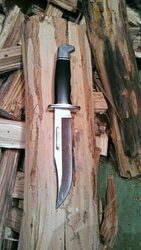Charlene, there are many who live in very damp areas like yours and still are able to dry their wood. So this begs the question, how do you handle your wood? For example, for us, we cut the wood to length in the winter months and just sort of stack it. After snow melt or in March or April, we then do the splitting. Stacking comes immediately after splitting. We then forget about the wood until usually early December and then we top cover it. In your area, I would say to top cover it immediately after stacking. In addition, make sure you get that wood off the ground. I would not be afraid to get it at least 6" off the ground which will give air circulation under the wood. Don't try to stack it high because you want to stack it a bit loose. In other words, don't go for the really pretty tight packed wood stacks. Stack it a bit loose to allow the air to move through. Stack it in the windiest spot you can find on your place. Sun is good too but wind is your best friend. This type of wood handling never fails. However, in addition to this, we usually try to have all our wood 3 years or more in the stacks before burning. This has many great benefits. For sure if you want to burn oak, you do need 3 years in the stack. Other woods you can get by with less but 3 years will still make wood super to burn and you'll find that you actually burn less wood this way.



